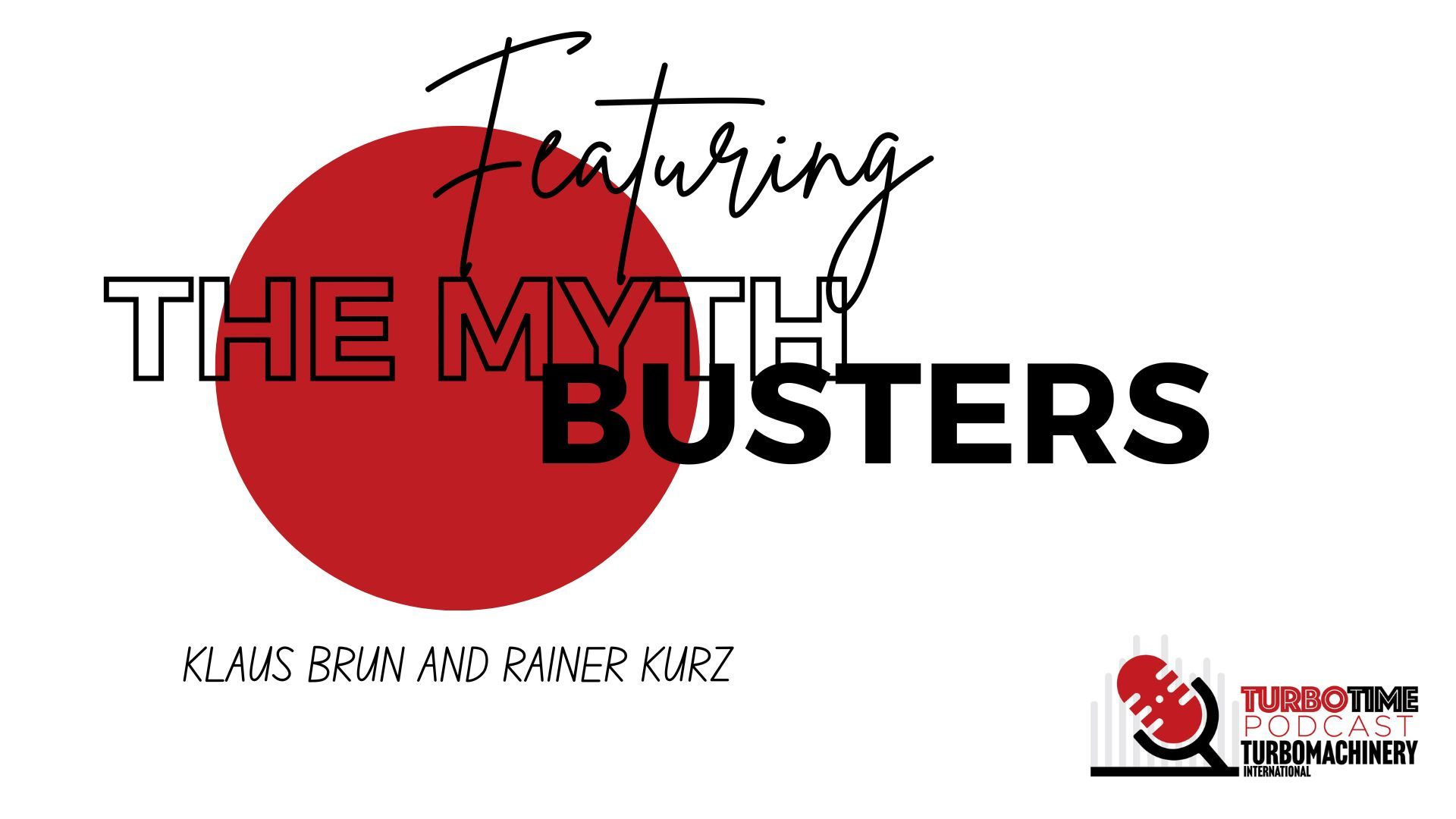TurboTime Podcast: Part II: Surge and Choke with the Myth Busters
The Myth Busters, Klaus Brun and Rainer Kurz, talk about surge and choke on a compressor map.

In part two of this episode of the TurboTime Podcast, Klaus Burn of Ebara Elliott Energy, and Rainer Kurz of RKSBenergy LLC, discuss surge and choke on a compressor map. They explain where they occur on the map, what happens to the compressor when they operate in these extremes, and about transient operation of a compressor.
Brun explained surge: “On the left side of the map you have surge, and on the right side is choke, overload, or stonewall. The most basic definition of surge is the compressor head cannot overcome the system-imposed pressure, i.e., pressure on the outside on the suction and discharge, and the compressor is not making enough head to overcome that pressure differential. So instead of the flow moving forward through the compressor, the flow suddenly turns around and goes backward through the machine until that pressure balances again, at which point the machine can overcome that head. Then it starts a process again. And that becomes a circular process—you get into these surge cycles, and it's a fairly complex thing.”
Kurz emphasizes that surge is an interaction between the compressor and the system around it, “meaning the compressor by itself doesn't surge,” he said. “If the system forces the compressor to make more pressure ratio than under whatever conditions the compressor is going to make, then the gas thus what it wanted to do in the first place, which is go from the high pressure to low pressure, meaning it goes backward through the compressor. The tricky part with that is on the compressor map, we show what the compressor does. So, the map by itself and that surge line on the map is essentially something you derive from the compressor performance.”
Check out Part 1 of the podcast on compressor maps here.